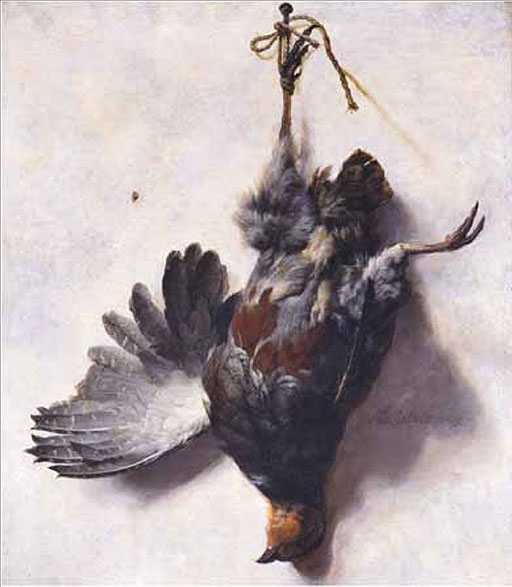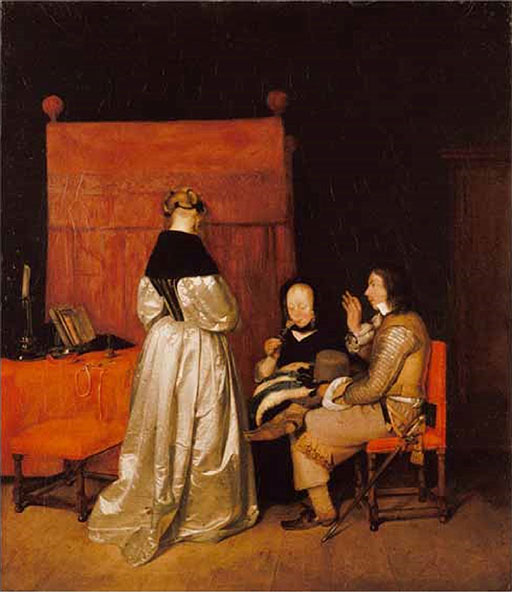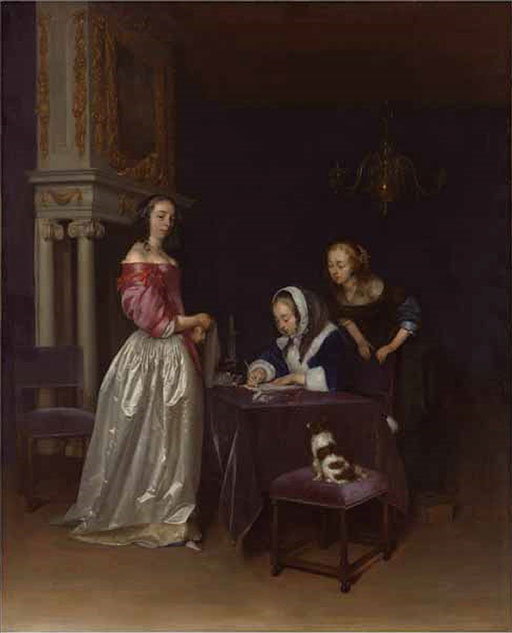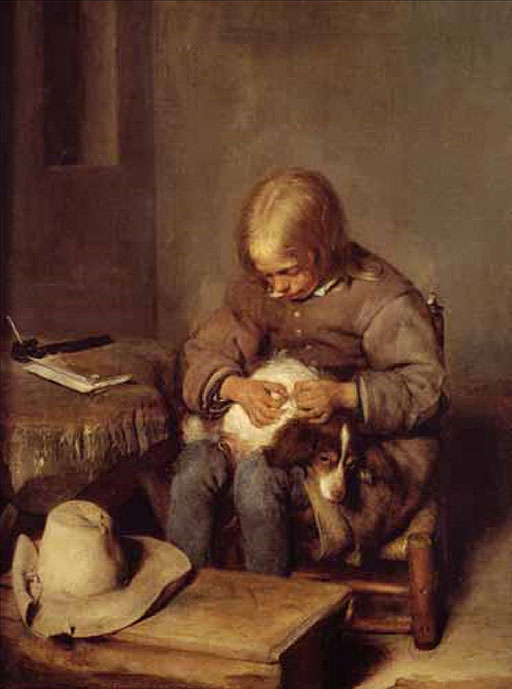1 ‘A new state, a new art’
The political and geographical entity that has come to be known as the Netherlands – and more popularly, although incorrectly, as Holland – emerged through a protracted struggle to gain independence from Spain. A confederation of Northern Provinces came together in 1579 in order to resist Habsburg rule, but it was not until the signing of a truce in 1609 and then the peace of the Treaty of Münster in 1648 that the Dutch Republic gained official recognition as a sovereign state. The early years of the seventeenth century are generally seen to mark the beginning of the Dutch golden age, when this small area of northern Europe became a flourishing centre of trade, shipping and finance, and made significant contributions to the domains of science, technology and culture. Through its large naval fleet, the Dutch Republic dominated world trade and established extensive colonial holdings, which formed the basis of its great wealth and power.
Two defining features served to distinguish the Dutch Republic from the predominantly Catholic and absolutist structures of neighbouring European powers. First, although a central administrative body was established in The Hague, each of the Provinces that made up the Netherlands was largely self-governing, allowing for greater independence and the development of strong local identities and traditions, particularly in large cities such as Amsterdam, Utrecht, Leiden, Haarlem and Delft. While agriculture and livestock remained important, it was a predominantly urban society, with a dense network of canals connecting the major trading centres. Second, Protestant Calvinism rather than Catholicism was adopted as the state religion. Since Calvinist theology prohibited the use of images in churches and other places of worship – though not in secular buildings such as homes or civic buildings – this had a significant impact on the forms of art that were produced. By contrast with Rome, and indeed most other European centres of art at the time, where artists could hope to gain substantial commissions from the church or the state, and were more or less dependent on aristocratic patrons, the Netherlands was a highly commercialised society that supported a growing independent art market. This is one reason why portable easel-painting, rather than more costly media such as sculpture or grand architectural projects, became the dominant form of visual art in the Netherlands.
It has been estimated that in the twenty-year period from 1640 to 1659 alone, between 1.3 and 1.4 million paintings were produced in the Netherlands – a remarkable figure given that the population at mid-century numbered approximately 2 million. Contemporary reports describe large numbers of paintings on display even in relatively modest households, and inventories show that oil paintings were well within the reach of the broad middlestrata of Dutch citizens, costing in some cases less than household linen or a piece of furniture (Grijzenhout and van Veen, 1999, p. 1). One consequence of the development of an open market, in which artists had to find buyers for their work, was an increase in specialisation. By concentrating on a particular subject, such as landscape or still life, or even the representation of a particular type of animal or fabric, artists could carve out a reputation and occupy a profitable niche. The troubling effect that such specialisation had on later viewers can be discerned in the observations of the president of the British Royal Academy of Arts, Sir Joshua Reynolds (1723–92), in his Journey to Flanders and Holland of 1781:
Two fine pictures of Terburg; the white sattin remarkably well-painted. He seldom omitted to introduce a piece of white sattin in his pictures.
Dead swans by Weeninx, as fine as possible. I suppose we did not see less than twenty pictures of dead swans by this painter.
The two artists Reynolds identifies are Jan Weenix (Figure 6) and Gerard ter Borch (Figures 7–9). Weenix (1621–?1660/61) specialised in game birds rather than swans exclusively – Figure 6 shows a very fine painting of a dead partridge – and he also produced paintings depicting human figures. However, both artists do seem to have sought, wherever possible, to choose subjects that allowed them to display their virtuosity in their chosen field.
While Reynolds admires the level of artistry and technical accomplishment to be found in the work of seventeenth-century Dutch painters, he notes that ‘their merit often consists in truth of representation alone’ and that it ‘is to the eye only that the works of this school are addressed’ (Alpers, 1983, p. xviii). The implicit contrast here is to painting in the ‘grand style’ associated with the Italian Renaissance and sustained through the teaching and patronage of state-sponsored Academies of Art across Europe. A central tenet of academic art theory, which Reynolds did much to promote, was that artists should demonstrate a capacity for ‘invention’ and ‘design’ by depicting elevated subjects derived from biblical, historical and mythological sources – capacities that were valued more highly than the ‘mechanical’ skill of imitation. Like others who adhered to this classicist and idealising conception of art, Reynolds measured Dutch painting against the expectations derived from a different tradition and found it wanting. What troubles him is not simply its sheer abundance and apparent repetitiveness, but what he sees as its merely imitative character.
It was not until the nineteenth century that a more positive evaluation of Dutch art began to emerge. When the German philosopher G.W.F. Hegel (1770–1831) gave a series of lectures on aesthetics in Berlin in the 1820s he drew a close connection between the social and political emancipation of the Dutch Republic, emphasising the ‘overcoming of the Spanish despotism of church and crown’, and the development of a new form of art that was rooted in the activities and accomplishments of its citizens. Hegel contends that the ‘final achievement’ of Dutch painting lies in ‘its utterly living absorption in the world and its daily life’ and that we should therefore not ‘suppose that they should have avoided such subjects and portrayed only Greek gods, myths, and fables, or the Madonna, the Crucifixion, martyrs, Popes, saints male or female’ (Hegel, 1975, pp. 884−5). Like Reynolds, Hegel is fascinated by the detailed attention that Dutch artists bestowed on the visual appearance of even the most mundane objects:
Velvet, metallic lustre, light, horses, servants, old women, peasants blowing smoke from cutty pipes, the glitter of wine in a transparent glass, chaps in dirty jackets playing with old cards – these and hundreds of other things are brought before our eyes in these pictures, things that we scarcely bother about in daily life.

Rather than decrying the apparently vulgar or trivial nature of such preoccupations, Hegel interprets the turn towards contemporary subjects as an expression of pride in Dutch citizenship and the hard-won freedoms of civil society.
Hegel gives his argument an unexpected twist by making a further observation that came to play an important role in later accounts. He notes that when we look at depictions of everyday scenes, the very prosaic and apparently insignificant character of the subject matter can help to draw our attention to the manner in which the painting has been produced and thus to the artist’s technical skill in rendering appearances. We are made more insistently aware of the art of painting as something that is valuable in its own right. Hegel puts this by saying that what enchants us ‘is not the subject of the painting and its lifelikeness’, but rather ‘the pure appearance which is wholly without the sort of interest that the subject has’ (Hegel, 1975, p. 598). In more straightforward terms, we might say that our interest in the painting is not identical with our interest in what it depicts. The depiction of a white satin dress, such as we find in The Paternal Admonition (Figure 7) and Curiosity (Figure 8) by Gerard ter Borch (1617–81) engages our attention in ways that things in the world do not, for we admire not merely the lustre of the material and the way that it reflects the light, but also the artist’s ability to capture these effects in the medium of paint. Hegel speaks of ‘the existent and fleeting appearance of nature as something generated afresh by man’, thereby drawing attention to the fact that a depicted object such as a wine glass or a satin dress is made twice over, once by the maker and once by the artist (Hegel, 1975, p. 162). The painting, too, is an ‘appearance’, which owes its existence to the artist’s deployment of the resources of his medium, and we can take pleasure in this independently of what it represents.



Many of Hegel’s arguments were recast in more accessible form by the French artist and critic Eugène Fromentin (1820–76), who published a highly influential account of Dutch seventeenth-century painting in his book Les Maîtres d’autrefois (The Masters of Past Time) in 1876. Under the slogan ‘a new state and a new art’, Fromentin celebrated the emergence of ‘a national and free school of painting’, which liberated itself from foreign models and ‘ceased to borrow from Italy its style and poetry, its taste for history, for mythology and for the Christian legends’ (Fromentin, 1948 [1876], p. 91, 95 and 98). According to Fromentin, we need to recognise the close connection between art and society if we are to appreciate the distinctive character of Dutch seventeenth-century painting:
The revolution which had just made the Dutch people free, rich and so ready to undertake everything, stripped them of that which everywhere else made up the vital element of the great schools … Dutch painting, as one very soon perceives, was not and could not be anything but the portrait of Holland, its external image, faithful, exact, complete, lifelike, without any adornment. The portrait of men and places, of bourgeois customs, of squares, streets, and countryside, of sea and sky – such was bound to be, reduced to its primary elements, the programme adopted by the Dutch School; and such it was, from its first day until its decline.
Here we have a clear statement of the view that what distinguishes Dutch painting from other traditions is its realism. Fromentin characterises Dutch painting as a ‘portrait’ of urban and rural life in the Netherlands and claims that it provides us with an ‘external image’ that is ‘faithful, exact, complete, life-like, without any adornment’ (Fromentin, 1948 [1876], p. 97). The art historian Svetlana Alpers, whose ideas shall be discussed later in this course, has drawn attention to the underlying convergence between Fromentin’s views and those of Reynolds: although they differ in their evaluation of Dutch painting, both agree that its character is primarily descriptive (Alpers, 1983, p. xvii). What Reynolds criticises, Fromentin praises. It seems likely that Fromentin’s admiration for this aspect of Dutch art was informed by recent developments in French painting and the development of a nineteenth-century school of realist painters, foremost among them Gustave Courbet (1819–77). Although Fromentin and Reynolds adhere to very different notions of art, and thus offer contrasting valuations of the significance of Dutch seventeenth-century painting, their accounts coincide in emphasising its ostensible ‘truthfulness’ and lack of idealisation.
